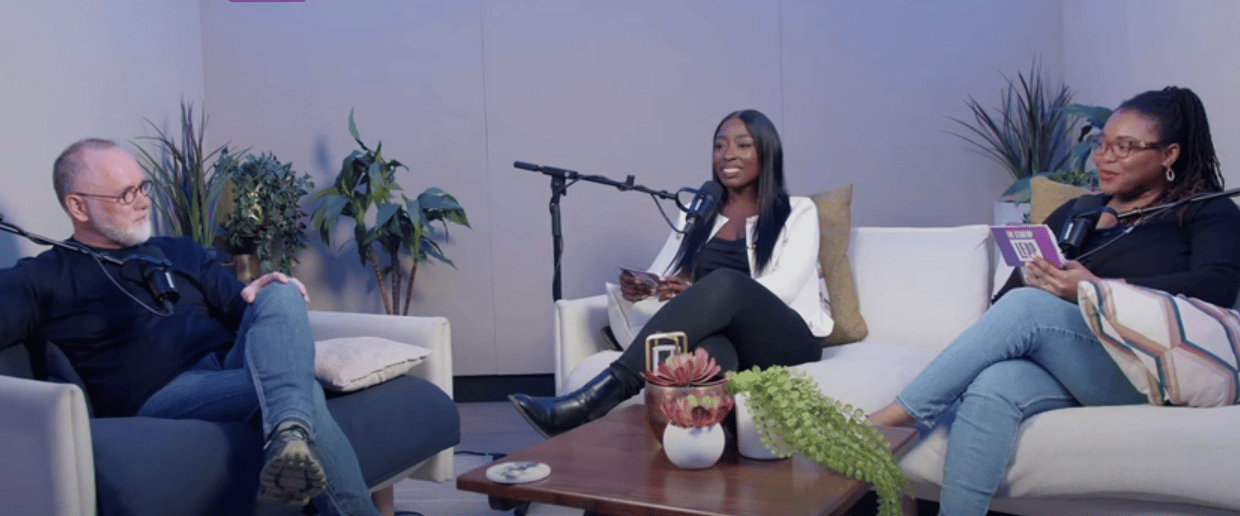- The Startup Leap
- Posts
- How Coen Jonker Built a 17M-User Digital Bank From a Consulting Project
How Coen Jonker Built a 17M-User Digital Bank From a Consulting Project
Before TymeBank became South Africa’s fastest-growing bank, Coen was pitching inside Deloitte and hearing “no” from 250 investors. Here’s how he turned rejection into resilience and built a digital bank for 17M+ people...
Dive into the full conversation on YouTube, Spotify or Apple Podcasts!
Hey Startup Leapers 👋
This week, we’re spotlighting a founder who redefined what it means to start lean, scale globally, and do it all with relentless purpose.
Before he raised millions…
Before he hit 17 million users…
Coen Jonker built a bank inside Deloitte.
Yes, really.
This is not your classic "raise fast, blitzscale, burn cash" startup story.
Coen’s journey with TymeBank is one of long-term conviction, resilience, and the kind of strategic patience most founders overlook.
From pitching 250+ investors during COVID just to stay alive, to engineering a go-to-market model that made TymeBank one of the lowest-CAC banks in the world - this episode is full of real lessons for anyone building under constraints.
In this episode, we explore:
Why Coen left a corporate law career to chase financial inclusion (00:06:00)
How TymeBank survived COVID by pitching to over 250 investors and finally getting a “yes” (00:35:00)
His framework for choosing expansion markets that actually work (Hint: It’s not about geography - it’s about fit) (00:26:00)
The unsexy reason they hit 17M users: obsessive focus on cost efficiency and distribution (00:44:00)
Why he believes crypto still holds enormous promise especially for the Global South (00:53:00)
….and so much more!

💎 Key Takeaways: The Hard-Won Playbook Behind Tyme’s 17M Customers and Global Leap
💡 He didn’t start with a product - he started with a problem only scale could solve
Coen wasn’t born in fintech.
He trained as a lawyer, obsessed over jurisprudence, and taught human rights law in post-Apartheid South Africa.
But one thing kept nagging him: political freedom hadn’t translated into economic empowerment.
The missing link? Access to basic financial tools.
No bank accounts. No access to credit. No safety nets.
He saw it as systemic exclusion from the economy and it became his life’s work.
So he spent five years studying financial inclusion, then took the leap.
First by working under Sim Tshabalala at Standard Bank (now Group CEO), learning banking from the inside.
Then by building TymeBank.🚀 He redefined distribution: retail chains as onramps, not just partners.
Most digital banks focus on sleek apps.
Coen focused on presence.
When TymeBank launched, smartphone penetration was low, trust in banking apps was lower, and nobody wanted to upload documents to something invisible.
TymeBank intentionally designed its business model around South Africa’s SRD grant recipients people earning just 50 cents/day. That meant:CAC (Customer Acquisition Cost) had to be <$5
Payback period under 12 months
No expensive branches or cash logistics
Transaction and savings-led revenue model first; lending came later
They partnered with Pick n Pay (a major South African grocery chain), placing kiosks in-store with “ambassadors” from the local community. Customers could open an account and receive a debit card instantly.
🤝 This distribution method gave Tyme scale without the usual costs. They now onboard 500,000+ users per month, consistently.
🔁 How you can apply it?
If you’re launching in a price-sensitive or trust-poor market:Set your unit economics around the hardest-to-serve customer then scale up.
Look for existing “everyday trust anchors” (e.g., local retailers, telcos) to piggyback on.
🎯 He delayed lending until the data (and culture) was ready.
Everyone told Coen to monetise quickly through lending.
He refused.
Instead, he spent years gathering transaction and savings data before offering loans.
When TymeBank did expand into SME lending, they tried to build it in-house. It didn’t work.
So Coen acquired Retail Capital, a local business lender with 10+ years of domain expertise, underwriting models, and culture.
That became TymeBank’s B2B arm and is now powering their merchant lending expansion into Indonesia, Vietnam, and the Philippines.
Want to hear more? Dive into the full conversation on YouTube, Spotify or Apple Podcasts!
🎥 Get a Glimpse of the Action Below…
@thestartupleappod 🚀 Founders, this is your reminder. It’s not the one pitch, one product, or one big break that makes it. It’s the 100 small, unseen pushes.... See more
🚀 What resonated most with you? Share your biggest takeaways from this episode with us on YouTube.
Let’s keep the conversation going!
📚 Interesting Reads, Resources & Opportunities
What Maria’s been listening to: A standout episode from the Founders podcast - a conversation on focus, purpose, and finding your life’s work.
Creo 2025 - programme powered by Tech Nation for neurodiverse and disabled entrepreneurs
Thanks for reading 💜
Tell us what you loved (or didn’t), refer a guest, or send a dilemma here.
You can read more about TSL on our website, and get us to 2k subscribers on YouTube by subscribing and sharing with your friends!
Want to sponsor? → drop us an email.